The spring atlas has been created using Google My Maps. You don’t need a Google account in order to browse the map or to download the data.
In order to make browing easier, click on the icon on the top right hand corner to open a new browser window with the map (See image below).
 The new window will look like the figure given below.
The new window will look like the figure given below.
 Clicking on the V symbol at the top of the legend will expand the list to show all the features (e.g. springs) in the map (See image below).
Clicking on the V symbol at the top of the legend will expand the list to show all the features (e.g. springs) in the map (See image below).
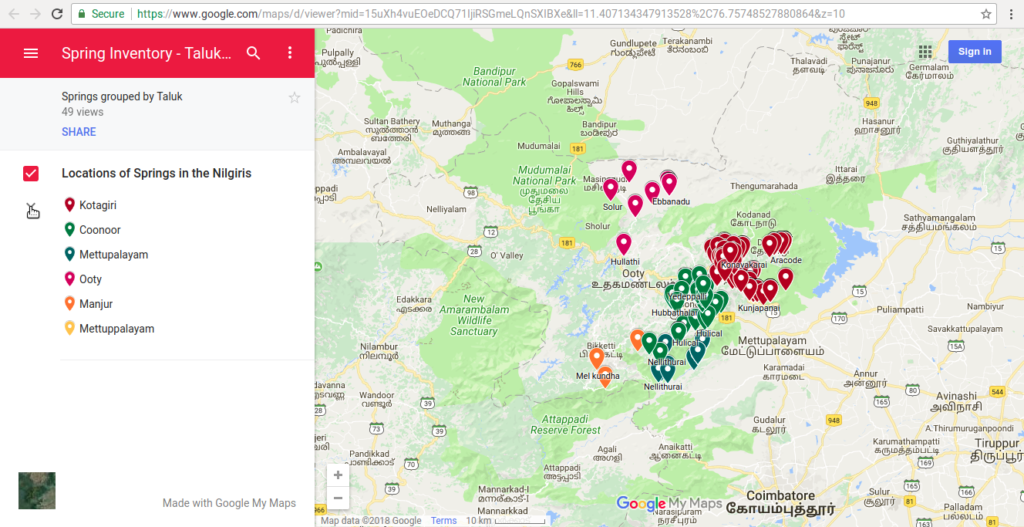 The expanded list will look like the figure below.
The expanded list will look like the figure below.
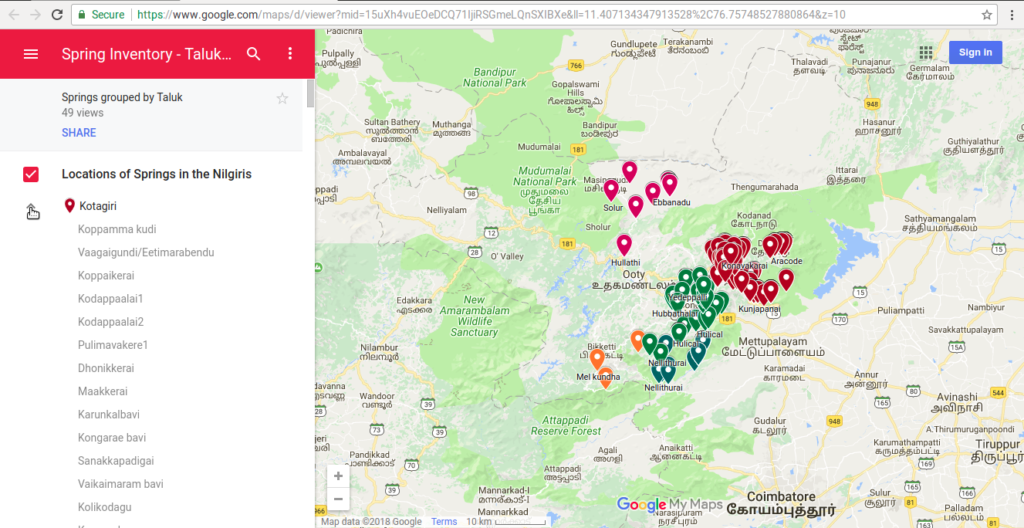 Clicking on any item in the Legend list will highlight that point in the map and show the data linked to that feature in the left side (See image below).
Clicking on any item in the Legend list will highlight that point in the map and show the data linked to that feature in the left side (See image below).
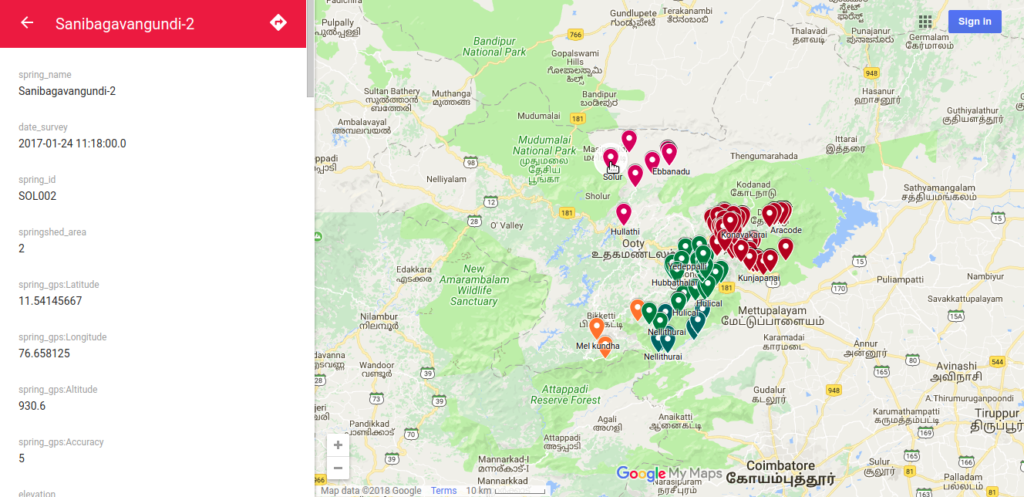 You can also use the zoom controls, i.e. Zoom in (+) and Zoom out (-) to take a closer look at a spring and its surroundings or to look at it from farther out.
You can also use the zoom controls, i.e. Zoom in (+) and Zoom out (-) to take a closer look at a spring and its surroundings or to look at it from farther out.
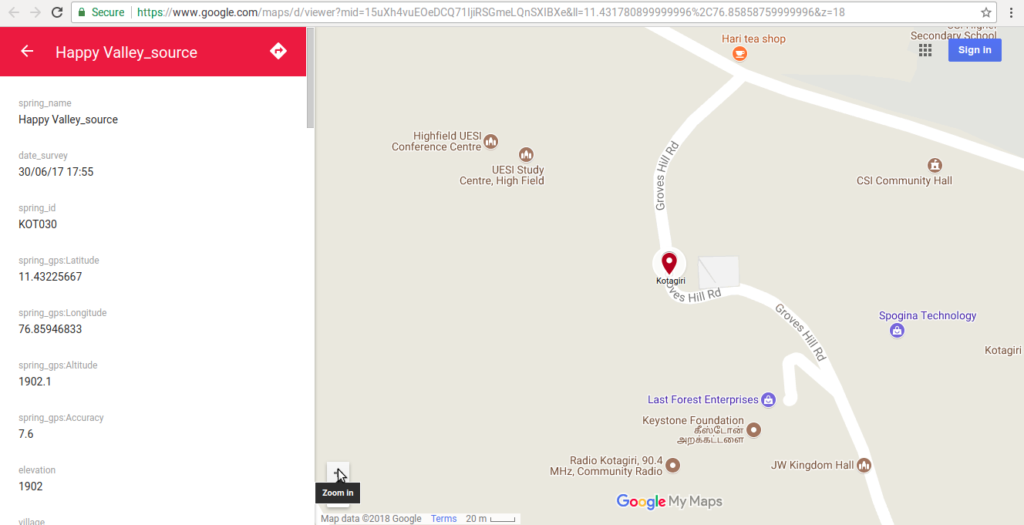 If you want to search for a particular spring based on the name of the spring, the village or administrative unit or based on any of the data fields, then you can click on the search button as shown below.
If you want to search for a particular spring based on the name of the spring, the village or administrative unit or based on any of the data fields, then you can click on the search button as shown below.
When yWhen you 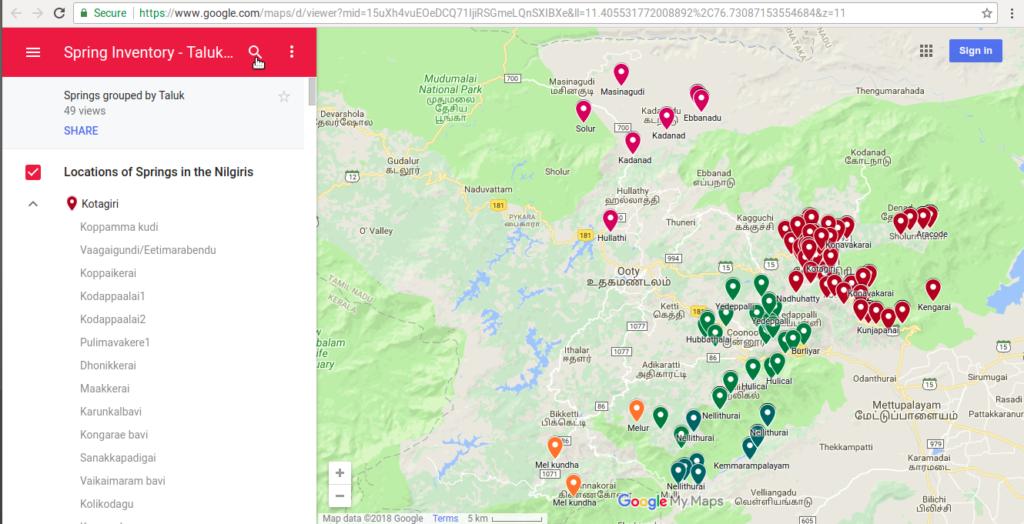 When you type your search word or phrase, the results would be shown in the left side with the top three results being shown individually. You can click on any of these to zoom in to that feature. Alternatively, you can click on the ‘See all … results’ link to list all search results.
When you type your search word or phrase, the results would be shown in the left side with the top three results being shown individually. You can click on any of these to zoom in to that feature. Alternatively, you can click on the ‘See all … results’ link to list all search results.
 By default, this map shows a Google Map as the background layer. You can switch to the satellite layer by clicking on the box at the left hand bottom corner of the map in the first view (See figure below).
By default, this map shows a Google Map as the background layer. You can switch to the satellite layer by clicking on the box at the left hand bottom corner of the map in the first view (See figure below).
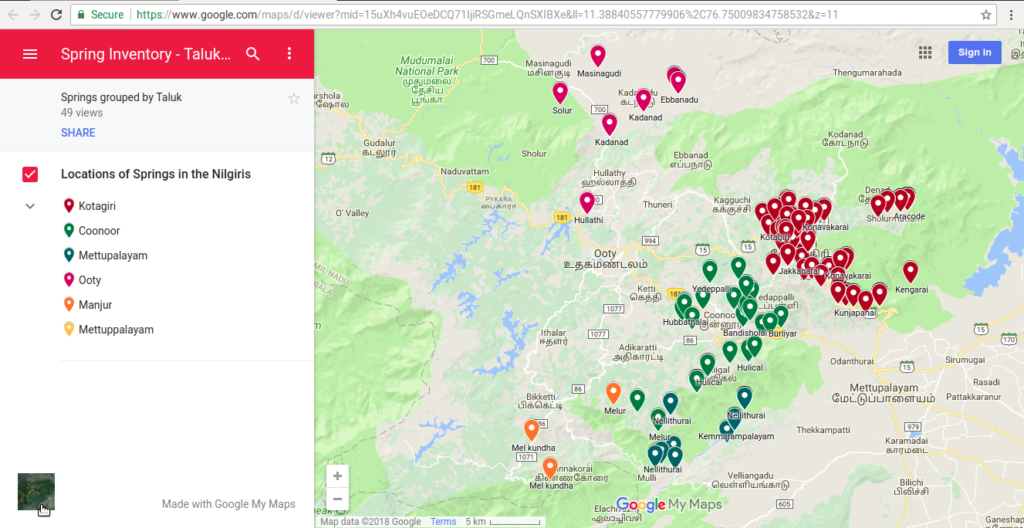 The satellite layer would then appear as the background layer (See figure below). You can get back the Map background by clicking on the same box again.
The satellite layer would then appear as the background layer (See figure below). You can get back the Map background by clicking on the same box again.
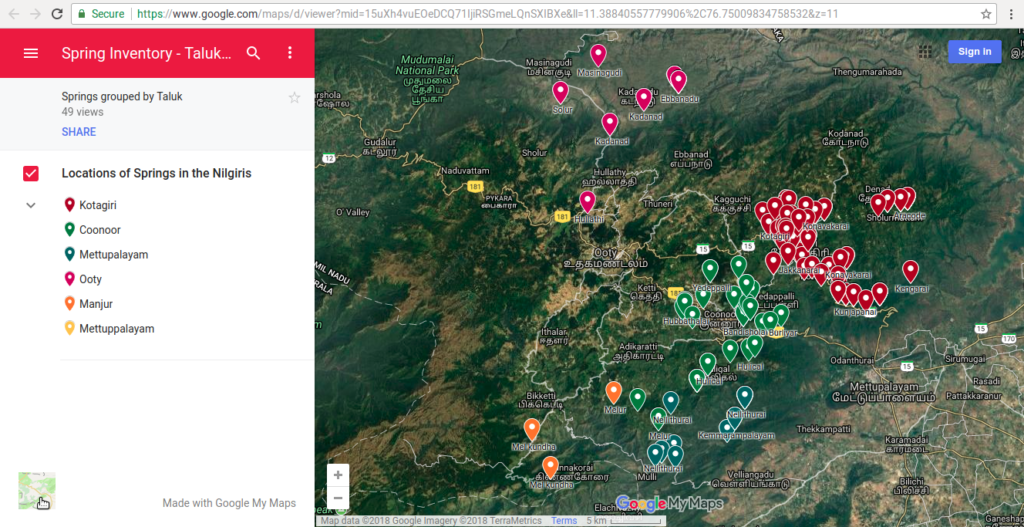 If you want to download the map data as a GIS compatible file (kml format), then you may do so by clicking on the icon to the right of the search button as shown below.
If you want to download the map data as a GIS compatible file (kml format), then you may do so by clicking on the icon to the right of the search button as shown below.
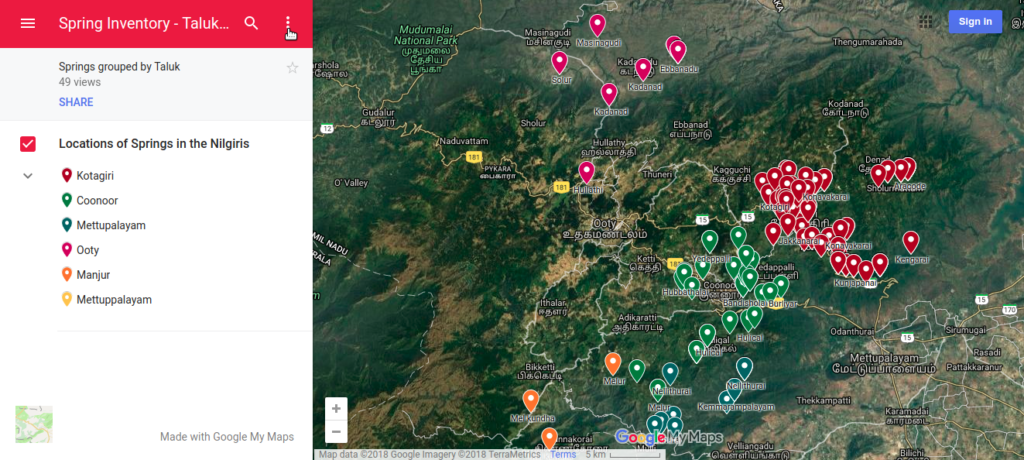 In the menu that opens up, click on the download kml option. Please note that you can print out the map, embed it in your own website or blog and go back to the initial view through the other options in this menu, as seen in the figure below.
In the menu that opens up, click on the download kml option. Please note that you can print out the map, embed it in your own website or blog and go back to the initial view through the other options in this menu, as seen in the figure below.

Clicking on the Download kml option opens up a dialog box titled ‘Export to kml/kmz’. You can download either the entire map or choose a particular layer from the drop down below the title. Tick the second option as shown below to download a kml file that can be used in a GIS software like QGIS or Google Earth Pro.
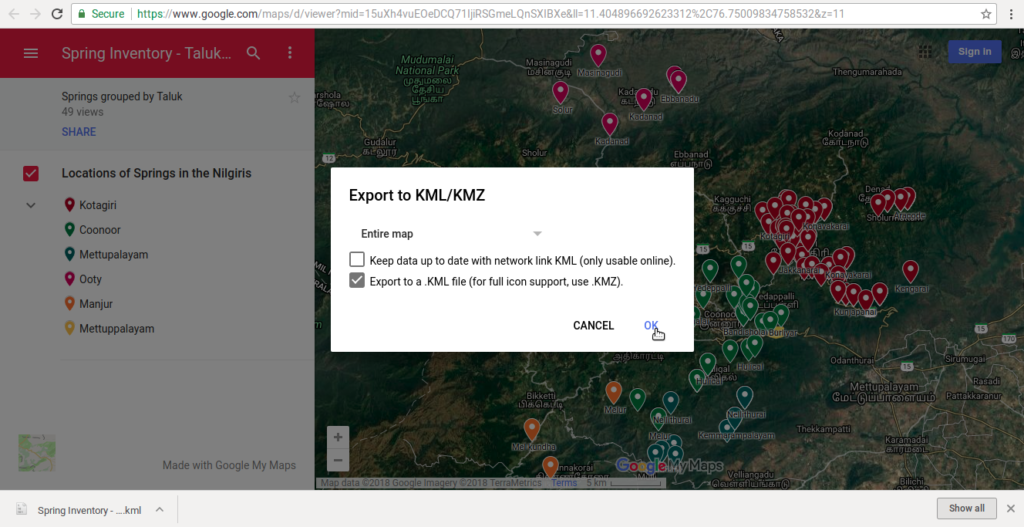 Depending on which browser you are using, clicking on ‘OK’ in the above dialog box would result in either the file being automatically downloaded or another dialog box popping up to ask you for a location to save the file to. The downloaded kml file can be opened in any GIS software. You can also open this file in the web version of Google Earth on a Google Chrome browser at https://earth.google.com.
Depending on which browser you are using, clicking on ‘OK’ in the above dialog box would result in either the file being automatically downloaded or another dialog box popping up to ask you for a location to save the file to. The downloaded kml file can be opened in any GIS software. You can also open this file in the web version of Google Earth on a Google Chrome browser at https://earth.google.com.
Learn more about using Google My Maps for your own projects at Google Earth Outreach.
Happy mapping!
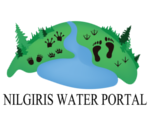

One Response